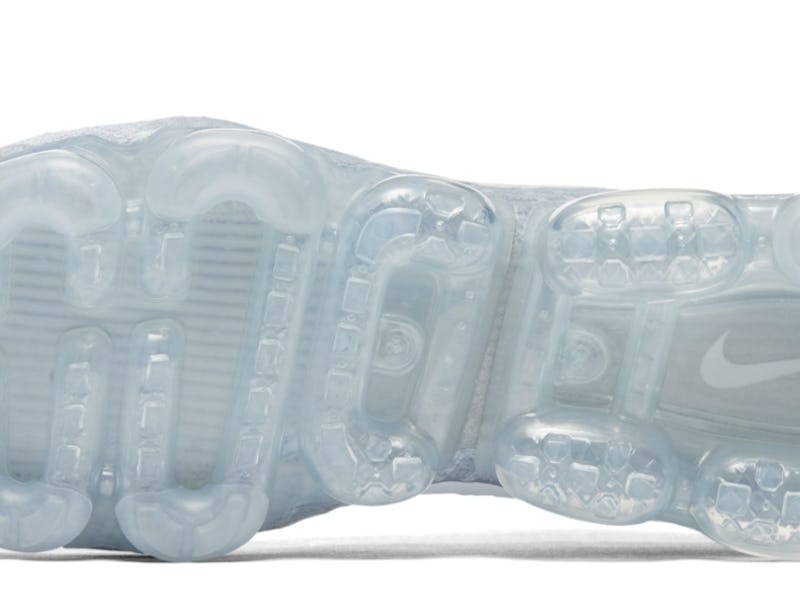Has Nike's Air VaporMax Technology Made the Midsole Obsolete?
It's just air bubbles down there now.

Air is the new foam, once again.
Running shoes have always been a platform for somewhat wacky ideas — big, orange pumps and flashing lights were just the beginning of hyper-competitive sneaker industry’s nodes of differentiation.
Now, there’s a new type of air-filled sole from Nike, called the VaporMax, and it could do more than catch the attention of passers-by. It could simplify the sneaker design by making the entire outsole an air bubble, making the shoes both lighter and more comfortable at the same time.
See, shoes generally have three layers below your foot: the insole, the midsole, and the outsole. In most shoes, the insole is little more than a thin sheet for the foot to touch, while the outsole is a simple layer of material designed to find some midpoint between grip, durability, and softness — it’s always been the midsole that did most of the absorption of the impact of each footfall.
An illustration of the air bubbles in an Air VaporMax.
But it’s goodbye, midsole. Nike wants to do away with the previously crucial element of the sneaker with the VaporMax. The sneakers take the long-term Nike project of filling outsoles with air to the logical conclusion — now, most of the outsole is hollow. This means that the outsole can compress far enough all on its own to provide a comfortable running experience, without the need for a separate midsole.
The upshot is that the shoes can be both simpler and lighter, without sacrificing comfort over even long-term runs.
A model holds the Air VaporMax
Nike claims that the innovation is in materials. Never before has it been possible to work with the polymers affordable enough for the walls of these air-filled cushions. Because, it’s one thing to make a light-weight plastic that has both the physical rigidity and elasticity required, but it’s quite another to also achieve the durability needed to survive repeated impacts with concrete. Previous air pockets provided some cushioning, but they were coupled with rigid structural portions of the outsole. Importantly, they didn’t provide enough cushioning to remove the need for a midsole.
Nike has shown an interest in space-age shoe technology before (3D printed sneakers, anybody?). The motivation is partly to have the best shoes, of course, but also to have the simplest shoes, and thus the cheapest to make.
By eliminating the midsole, Nike can affix the “upper” of the shoe directly to the outsole, reducing the number of components and simplifying the fabrication. There are fewer things to order, store, manipulate, and above all quality-control.
Still, it’s probably worth waiting to see how runners review the new tech after a few months of hard use; Nike’s been known to investigate cool new shoe technologies that are far less useful than they first appear.
These shoes are expected to go on sale to the public on March 26. The technology was introduced nearly a year ago in New York at Nike’s innovation summit. It looks like the shoes will be available in time for the 30th anniversary of the Nike Air Max, also on March 26.